Blockchain designed to evolve: the road to Tezos X
The next generation in blockchain design: modular in design and integrated in experience, providing a scalable, cloud-like backend to a wide range of applications.
13 minute read
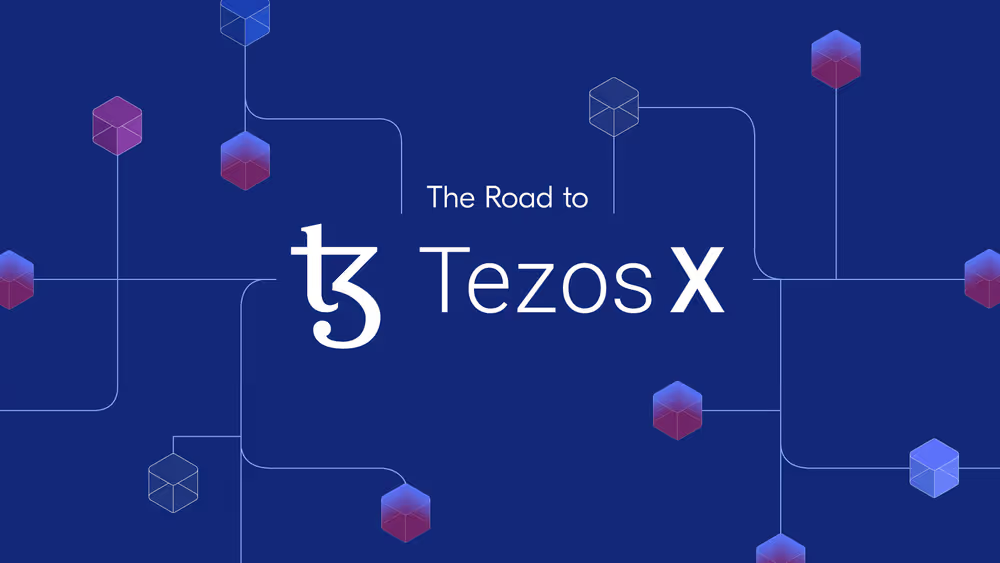
This post was co-authored by Tezos protocol developer teams at Nomadic Labs, Trilitech, and Functori, and describes a unified vision for the future of Tezos. As with any upgrades to the protocol, the development trajectory and the implementation of this vision are subject to the will of the Tezos community as expressed via on-chain governance mechanism.
Tezos was conceived to be future-proof, upgradeable from the start and by design - and to do so according to the will of its community.
Staying true to this ethos and acknowledging some of the fundamental issues facing the blockchain space today, we propose a vision of the future where Tezos becomes a one-stop shop for a wide range of applications. A single, integrated system where each component is optimized to work seamlessly with the rest, with high performance, composability, and convenience.
Getting there is more than just making things faster, though; it’s about enabling innovators and driving activity. It’s about scaling both performance and utility, all the while preserving the properties that make a blockchain worth having. That’s what Tezos X sets out to achieve.
In truth, we’re already well on our way to Tezos X; we’ve been at it for a while. Many pieces of the system are already here: they’re part of the incremental evolution of Tezos. Our community has brought us here, and it’s our community that’ll keep driving us forward.
Let’s take a look at how we got where we are, and what the future of Tezos could look like.
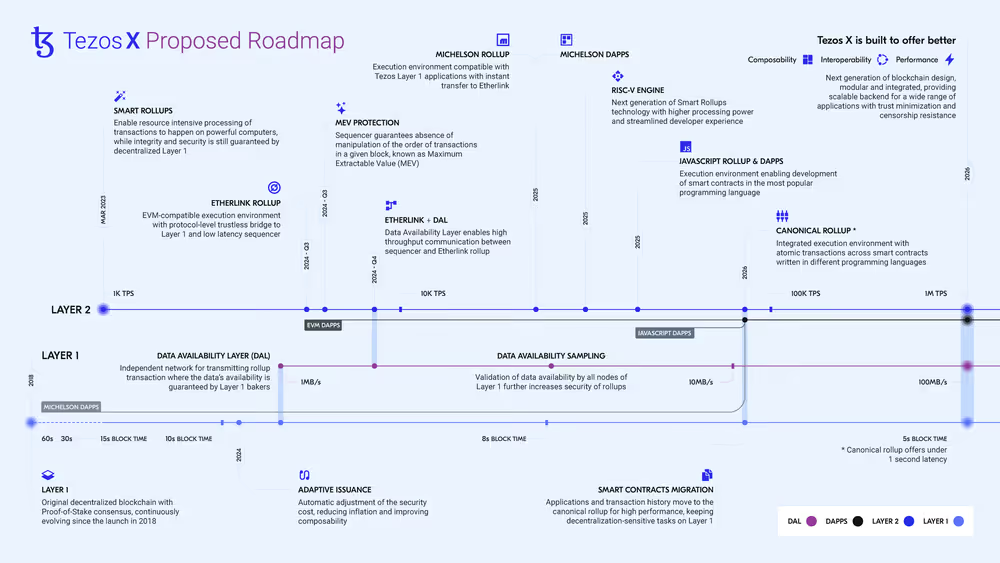 Proposed roadmap to Tezos X (click for full-size image)
Proposed roadmap to Tezos X (click for full-size image)
The original design: layer 1 handles everything #
Tezos started out as a monolithic blockchain, where every node replicates all activity. One layer, one execution environment.
However, scaling a monolithic blockchain means that requirements for computing power and internet bandwidth for all node operators increase as activity on the network increases. This is not sustainable and can result in centralization, as only those with enough resources to run high-end hardware remain able to secure the network.
In order to scale and maintain decentralization, Tezos has evolved from a monolithic to a modular design, where interconnected groups of nodes take on different roles - all the while maintaining an integrated experience for builders and users.
This approach keeps activities requiring a high degree of decentralization, like consensus and governance, on layer 1. Everything else is offloaded to modules optimized for their specific task, designed from the ground up to work together as one well-oiled machine. This approach allows massive improvements in performance while fully inheriting security and censorship-resistance from the L1.
This proposed modular-but-integrated, “modu-lithic” approach enables a huge boost in performance, composability, and interoperability and, when put together, means Tezos can get the best of both monolithic and modular blockchain design.
Boosting performance: high scalability, low latency #
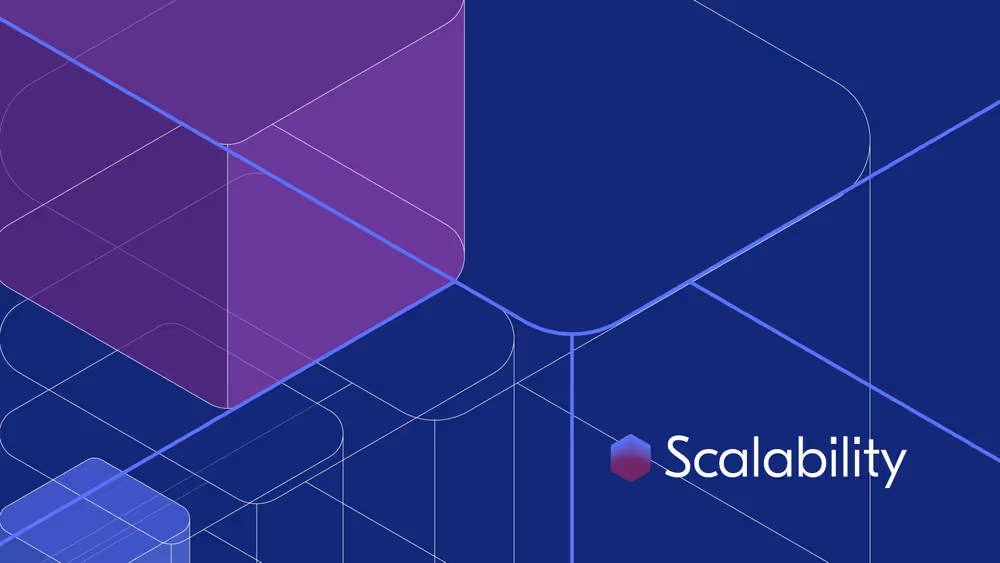
Performance is arguably the first big, hairy problem that needs to be solved to take Tezos to new heights. Much like broadband transformed the web by making online video a reality, Web3 needs to transcend its dial-up days to unlock its true potential.
From early 2022, several Tezos protocol developer teams set out on a joint mission to massively scale the Tezos network. The objective: to ensure that a lot more people can do a lot more on the network at the same time.
Central to this strategy are Smart Rollups, a scaling technology where an optimized and dedicated second layer executes transactions, while consensus and settlement remain guaranteed by the L1.
By July 2023, developers were able to showcase a network throughput of 1 million transactions per second in a public demonstration. This feat was achieved by combining the horizontal scaling enabled by Smart Rollups (1,000 rollup nodes running in parallel) with Data Availability Committees (an efficient mechanism for publishing rollup data outside the constraints of L1 blockspace).
More recently, a dedicated Data-Availability Layer has been enabled on the Tezos mainnet. An evolution from DACs, the DAL ensures that the network can handle the large amount of data transmitted by rollup users in a fully decentralized way.
The combo Smart Rollups-plus-DAL is powerful, and in terms of performance alone, takes Tezos close to its broadband moment.
However, scaling the system horizontally with scores of rollups running in parallel introduces a new problem: a fragmented ecosystem where applications can’t talk to each other as seamlessly as they do in the L1. The composability of applications that run and interact smoothly is severely degraded as latency and friction are introduced.
Key developments #
Smart Rollups (✅ Q1 2023): Smart Rollups massively scale the Tezos network by allowing the resource-intensive processing of transactions (execution) to take place on multiple, powerful dedicated layers, while integrity and security is still guaranteed by Tezos’ decentralized layer 1. The flexible design of Smart Rollups allows for the deployment of tailor-made blockchain solutions that don’t compromise on security and scalability.
Faster blocks (🔁 Ongoing): Pipelining and other optimizations have allowed block time to be reduced from 60 seconds to 10 seconds. The lower the block time, the smoother and faster applications run, and the sooner transactions can be considered final.
Data-Availability Layer (🔁 Ongoing): Smart Rollups require a large amount of data to be transmitted over the network and kept publicly available – more than Tezos’ layer 1 can support without compromising on decentralization. The Data-Availability Layer is an independent network for rollup data where data publication is guaranteed by the Tezos layer 1.
Composability: one rollup to rule them all #
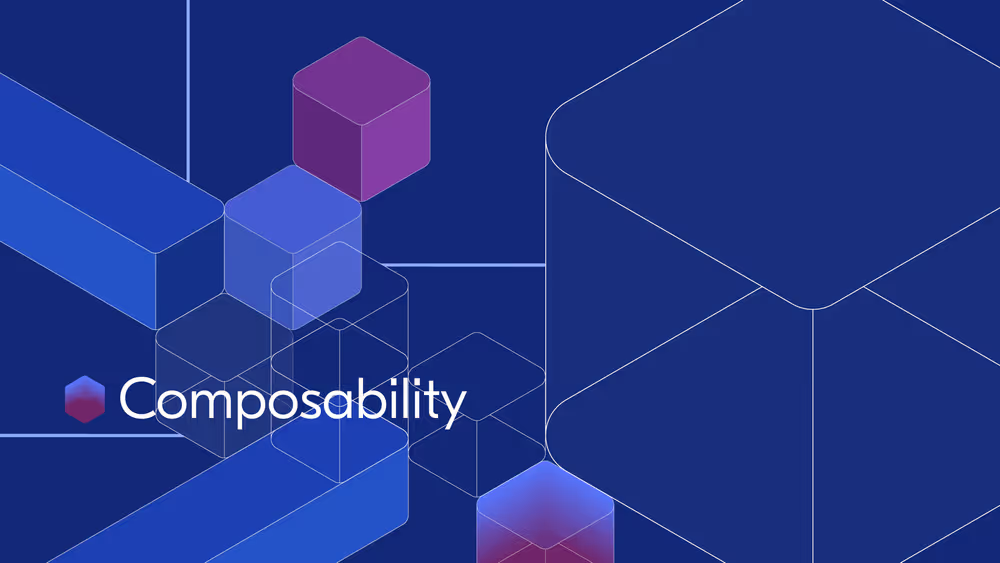
Composability is about making everything work together. It’s about allowing applications to interact with (and build upon) one another to arrive at a sum that’s greater than its parts.
As the DeFi “money Legos’’ analogy goes, composability is what allows a bunch of individual bricks to become a castle.
This isn’t a problem for monolithic blockchains, but a fractured, multi-rollup design that relies on horizontal scaling alone will have composability issues — no matter how many extra rollups it unrolls.
Bricks that are kept in different boxes can’t be easily assembled into castles. So, how to solve that?
How about vertical scaling? #
Given the focus many L2 builders place on the horizontal scaling aspect, it’s easy to overlook just how useful rollups are for vertical scaling, too. Tezos X builds on this underappreciated property.
As the heavy lifting moves to another layer, the Tezos L1 becomes the underlying decentralized and censorship-resistant backbone for Smart Rollups. But importantly, Smart Rollups are also free to scale vertically with raw processing power.
There’s no longer a tradeoff between hardware requirements and decentralization within the system. With that, performance is only limited by the specs of one (or a few) ludicrously overpowered computer(s).
At this point, why even bother having hosts of parallel networks? In theory, one rollup is all that’s needed to meet the requirements of all but the most extreme use cases. Better yet, with all activity happening in a single rollup, we can achieve complete composability.
That’s what Tezos X envisions: the creation of a single canonical rollup able to handle - and massively expand - all activity on the Tezos network.
But scaling performance isn’t enough, and reclaiming composability (while keeping decentralization and censorship resistance) is really just par for the course — after all, monolithic Tezos was composable to begin with.
The last piece of the puzzle is bringing in more developers and experimentation to scale the utility of Tezos. For that to happen, we need a better developer experience, with more flexibility to allow builders to pick and choose their tools and programming languages. We need to make Tezos more interoperable.
Key developments #
Canonical Rollup (⏳Exp. 2026). The Tezos ecosystem converges on a single rollup for most activity. The canonical rollup supports multiple execution environments with atomic transactions across smart contracts written in different programming languages.
New runtime (⏳Exp. 2025): RISC-V is being explored as a runtime, in addition to the current WASM engine for rollups. WASM is designed for execution of web applications in a browser, while RISC-V offers an architecture which is highly efficient, more scalable, and closer to that of a hardware processor.
Further scaling (⏳Exp. 2025). Ultra-high throughput in Smart Rollups with parallel execution of transactions will take Tezos’ scalability to the next level. The target for this work is one million transactions per second in a single rollup.
Interoperability: making Tezos plug’n’play #
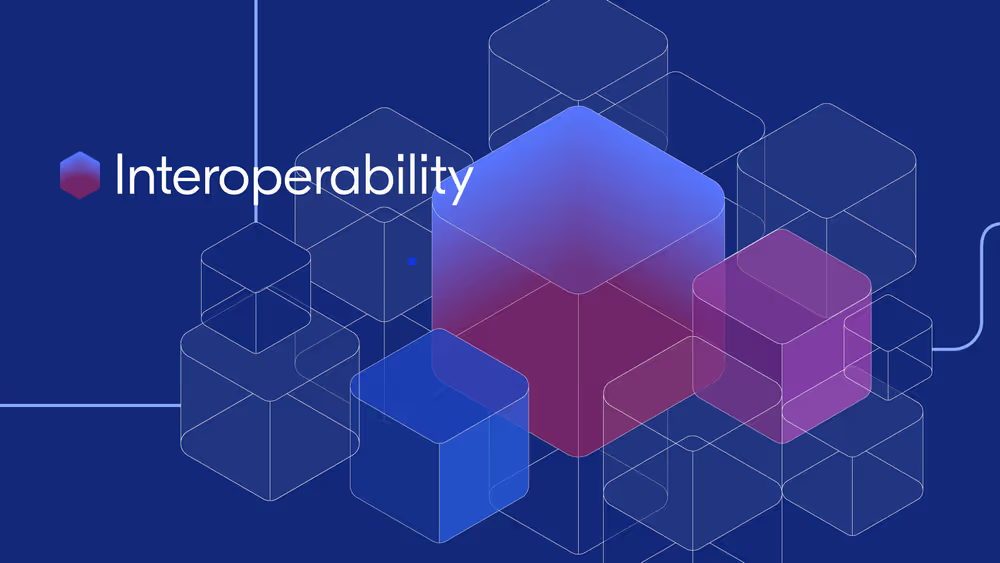
Interoperability means breaking down barriers and offering more freedom to developers. It’s about opening up Tezos to new programming environments, connecting with other blockchains, and integrating with non-blockchain systems.
Most blockchains today require developers to learn new, dedicated programming languages, which often aren’t used outside their own ecosystems. This makes it hard for developers to deploy and maintain cross-chain applications, and even harder to connect with the off-chain world.
Even with the widespread adoption of Ethereum’s EVM and its main language, Solidity, most blockchains are still closed to mainstream programming languages.
A huge chunk of all machine learning is done in Python; web development mostly relies on JavaScript; finance is dominated by the likes of Java and C#. There’s a massive pool of talented developers that can be tapped into.
With an increasing amount of code being written by AI, the competitive advantage of mainstream languages will only grow. LLM algorithms feed on existing quality data, and there’s just no competing with the troves of training data for the likes of JavaScript and Python.
Building on top of advances in interoperability, the canonical rollup will support multiple execution environments. Devs will be able to deploy smart contracts using their preferred language. A smart contract written in Solidity calls a smart contract written in Python, and passes the result to a third contract written in JavaScript — all within the same transaction, and within the same rollup.
This interoperability will open up Tezos to millions of new potential builders, a huge suite of existing tools - and maybe even to your friendly neighborhood AI model, too.
Key developments #
Etherlink (🔁 Ongoing): An EVM-compatible Smart Rollup built by Tezos protocol developers. Etherlink enables the deployment of Solidity smart contracts with frictionless integration with EVM ecosystem tools. The protocol-level trustless bridge between Smart Rollups and layer 1 enables asset transfers without relying on third parties.
Michelson rollup (⏳Exp. 2025): A proposed rollup supporting the same smart contract languages as Tezos layer 1. This rollup will allow existing applications on Tezos to be easily deployed on layer 2, benefiting from the high scalability and low latency enabled by Smart Rollups. The Michelson rollup can run in parallel with Etherlink, enabling a trustless bridge between those two runtimes.
Support for mainstream languages (⏳Exp. 2025). Turnkey Smart Rollup solutions will come with built-in support for deploying smart contracts in top mainstream programming languages. No need to learn a blockchain-specific programming language to start building. The first planned additions are JavaScript and TypeScript, with Python and Java being explored as next additions.
Improved developer experience (🔁 Ongoing): Tooling, tooling, tooling. Tezos developer teams have prioritized delivering more and better SDKs, APIs, and other tools for building on Tezos. The guiding principle is that integrating the Tezos blockchain into any type of application should be as easy as importing a software library.
Welcome to Tezos X #
 A diagram of the Tezos X vision (click for full-size image)
A diagram of the Tezos X vision (click for full-size image)
This vision for Tezos X represents a significant evolution from the original Tezos design.
Free from the burden of also having to process every transaction and computation, the L1 would become significantly faster, with even lower latency. The lighter load also means bakers would still be able to secure the network with low-spec hardware, ensuring decentralization.
A huge chunk of network activity would then be free to move to an overpowered canonical rollup, while the layer 1 focuses on being a lightweight consensus/settlement layer.
At this stage, Tezos will have moved from a monolithic blockchain, where every blockchain node replicates everything, to a fully modular design with an integrated experience, where different groups of nodes seamlessly interact and handle their own specialized tasks with high efficiency.
The processing power enabled by this shift means that, at this point, Tezos would be more than a blockchain.
It’ll be a reliable, usable, and scalable cloud-like backend for a wide range of applications.
Key developments #
A new role for layer 1 (⏳ Exp. 2026): Proposed migration of accounts, applications and transaction history to the canonical rollup. Going forward, layer 1 would only handle the decentralization-sensitive tasks of consensus and settlement. Freeing up layer 1 resources means everything can run faster without requiring powerful hardware to secure the network.
Minimized latency (⏳ Exp. 2026+): As layer 1 becomes more lightweight, block time can be further reduced while keeping layer 1 decentralized. The first target for this phase is to get to a 5-second block time. As the protocol is further optimized and the capacity of hardware generally improves, even lower block times will become possible.
Decentralized sequencer (⏳ Exp. 2024): The possibility of a decentralized sequencer for the canonical rollup is being explored. A sequencer would allow for much lower latency inside the rollup – much less than a second. It could also offer fair ordering of transactions or transaction encryption, which serves to prevent someone from manipulating the order of transactions in a given block to their benefit, known as Maximal Extractable Value (MEV).
Footnotes #
Horizontal scaling: scaling up a system to meet increased usage by increasing the number of nodes that process transactions without necessarily scaling each node’s capacity.
Vertical scaling: scaling up a system to meet increased usage by increasing the raw power of the existing nodes, such as increasing their processing power and internet bandwidth.